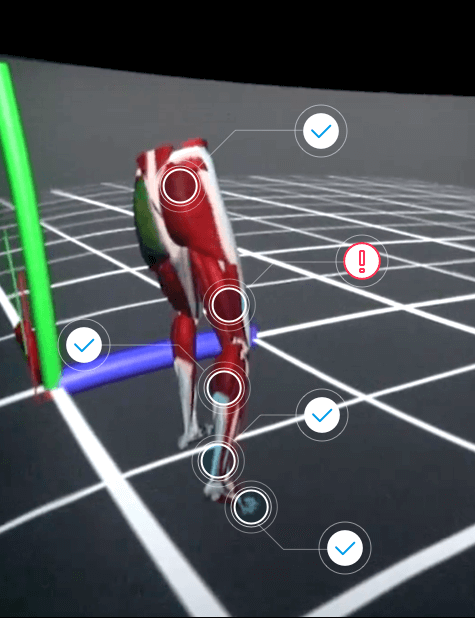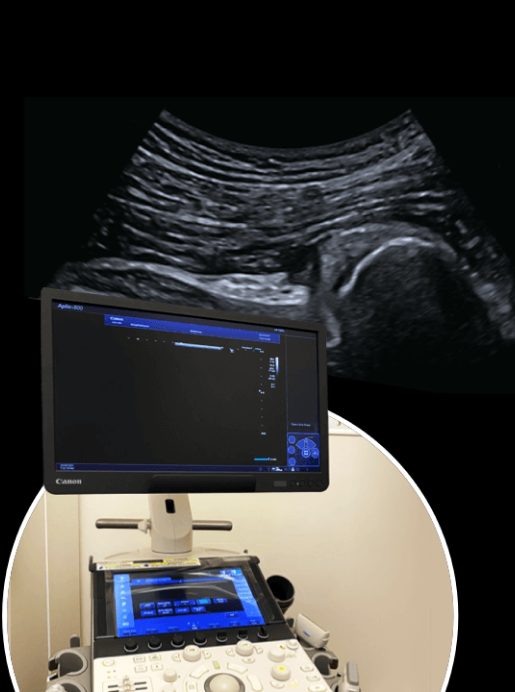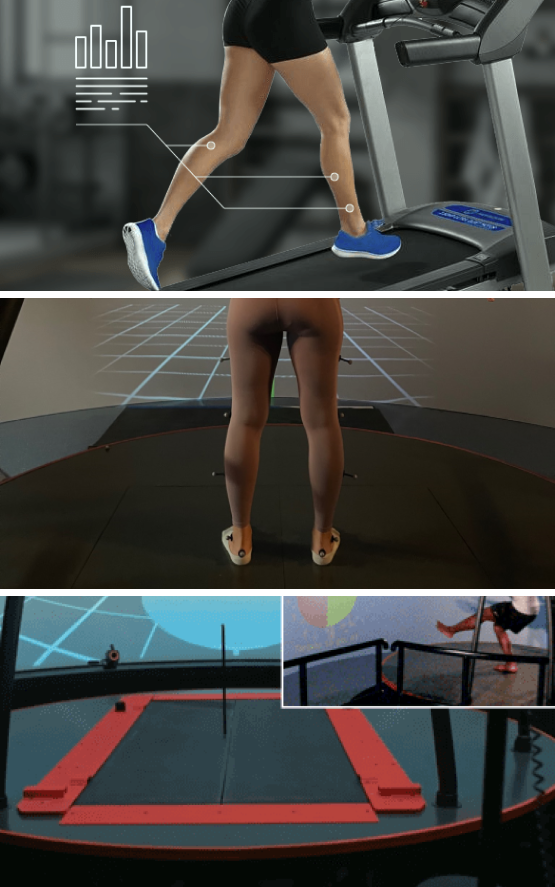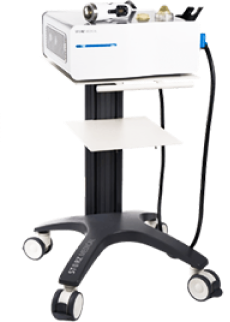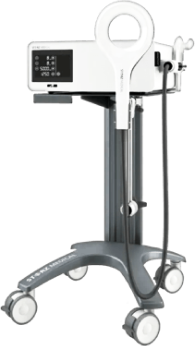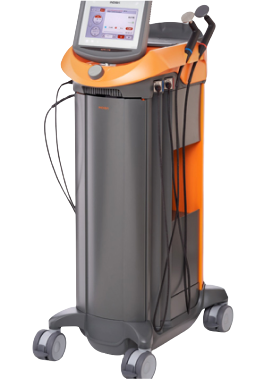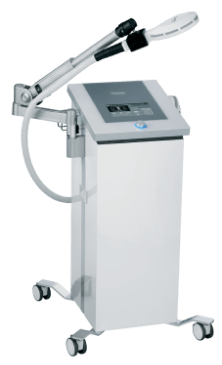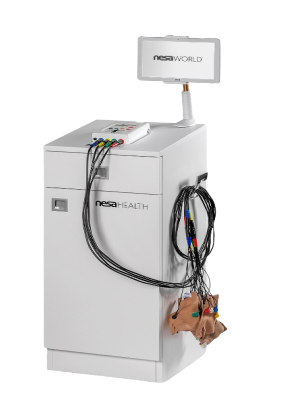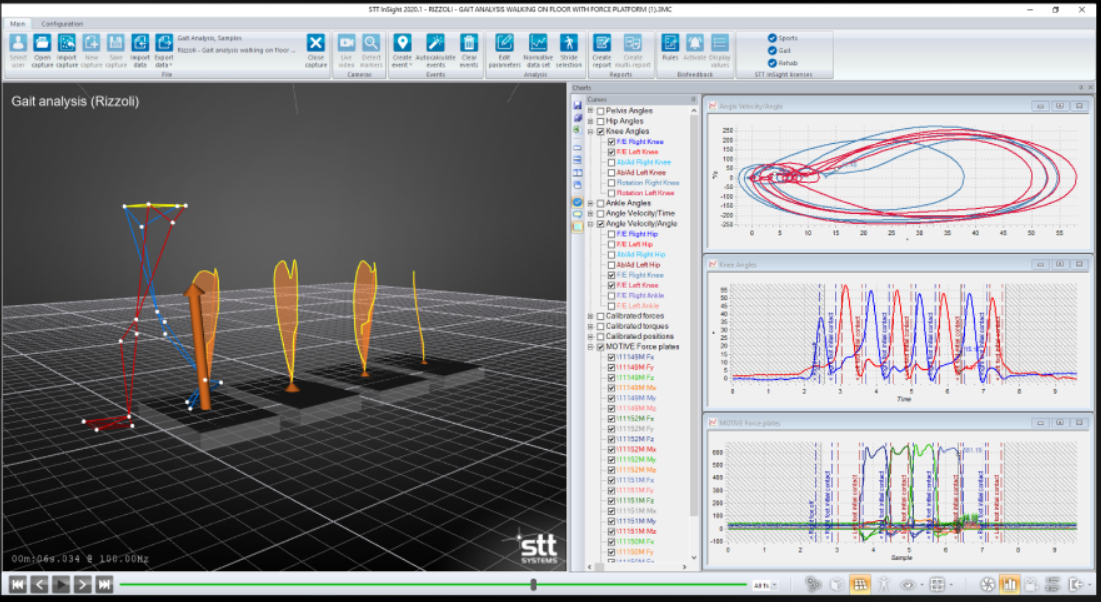The Runner’s Clinic at NYDNRehab features research-grade technologies for measuring and quantifying running performance data. Our advanced motion ultrasonography capabilities let us view the body’s structures in real time, while the patient is running.
Real-time ultrasound imaging paired with objective data gives us an accurate baseline overview of running gait mechanics, allowing us to customize an effective and measurable protocol for personalized gait retraining. The specific configuration of our 3D running lab is based on the latest evidence-based motion analysis research.
Conventional 2D gait analysis is generally subjective, based on observations of running gait via amateur video. Even if you add objective factors like joint angles, and spatiotemporal parameters like speed, stride length, and phases of the gait cycle, you only get a superficial overview of the subject’s gait mechanics. And unless you have a treadmill with the capacity to measure force and pressure, you cannot accurately assess foot mechanics.
While conventional analysis may be useful for suggesting basic improvements in running gait, it does not reveal critical mechanical deficits that can undermine performance and lead to injury. In many cases, runners are given generic explanations for their pain, such as weak glutes, tight hip flexors, weak or tight calves, etc. However, exercises prescribed to target those muscles often fail to eliminate pain or render satisfactory improvements in running gait.
In 95% of runners who do not experience pain while running, simply looking at gait mechanics, even with the most sophisticated equipment, is not enough to get a full and accurate picture. It is only when we visualize how the body’s structures interact during running that we get a clear idea of how to make improvements. The running lab at NYDNRehab features diagnostic motion ultrasonography, a new technology that allows us to look at muscle and joint action in real time. With motion ultrasonography, we are able to sync 3D data with high-resolution imaging, to detect issues with muscles, tendons, fascia, ligaments and joints.
This unique combination of technologies helps us to confirm our findings from 3D running analysis data, to better understand gait anomalies and how to correct them. It also alerts us to old injuries that were never properly rehabilitated, that contribute to gait anomalies. With this knowledge in hand, we are able to provide you with a comprehensive treatment plan that addresses all factors that influence your gait mechanics.



